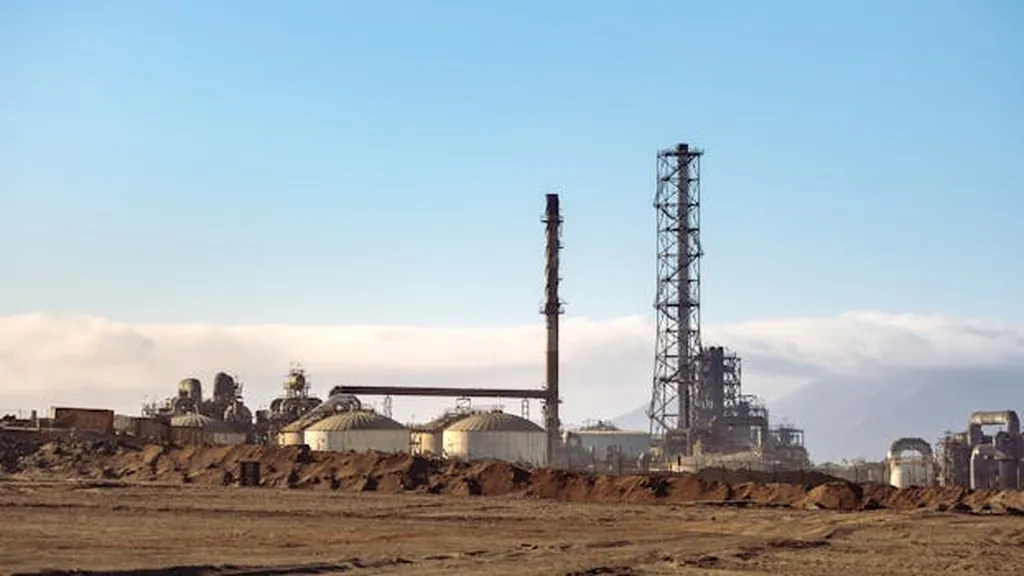In the heart of Shanxi Province, a region often dubbed China’s “coal sea,” a pressing environmental challenge is unfolding. As coal mines close, they leave behind a legacy of acid mine drainage (AMD), a toxic byproduct that threatens water resources and ecosystems. A recent study published in *Carsologica Sinica* (translated as “Karst Science”), led by Chunlei Tang of the Institute of Karst Geology, CAGS, sheds light on the hydrogeological dynamics of AMD in the Shandi River Basin, offering crucial insights for the energy sector and environmental management.
Acid mine drainage is a widespread issue in coal mining areas, characterized by its low pH and high concentrations of sulfate, iron, manganese, and other harmful substances. These pollutants can severely impact groundwater, surface water, and soil, posing significant risks to both human health and the environment. “The acidic characteristics of acid mine water make trace elements like mercury, arsenic, and lead dissolve in the coal seam, accelerating reactions and increasing toxicological composition,” explains Tang.
Shanxi Province, with its vast coal resources, faces a looming crisis as mined-out areas continue to grow. By 2010, these areas covered about 20,000 square kilometers, and the problem is expected to worsen in the coming decades. The province’s strategic location, straddling the Yellow River and Haihe River Basins, amplifies the concern. Nearly 5 billion cubic meters of surface water flow out of Shanxi annually, but the potential pollution from AMD could threaten the ecological environment of other river basins.
Tang’s study focuses on the Shandi River Basin, a typical abandoned coal mine area in Yangquan City. Through hydrogeological surveys, drilling, and profiling, the research team described the basin’s lithology and hydrogeological conditions, revealing significant changes due to coal mining. “The recharge mainly migrates vertically through the water-conducting fracture zone generated by destruction. The runoff mainly flows transversely through the tunnel and the water conducting-fracture zone,” Tang noted.
The findings highlight the complex hydrogeochemical processes at play. The pH value of acid mine water in the basin ranges from 2.47 to 7.28, with an average of 4.17. The hydrochemical types identified include Na-SO4, Ca·Mg-SO4, Mg-SO4, and Mg·Ca-SO4, with cations primarily consisting of Ca2+, Mg2+, and Na+, and anions dominated by SO42−. The study also notes that the acidification reaction rate of FeS2 is slow in a closed reduction environment but accelerates in an open oxidation environment.
The Shandi River Basin, covering an area of 58.4 km2, serves as a complete and independent water circulation system. It integrates open-pit mining, in-situ mining, and closed pit mining, making it a unique field monitoring and testing site for AMD production, migration, and discharge. “This basin is a research site for prevention and treatment, offering valuable insights for the energy sector and environmental management,” Tang added.
The implications of this research are far-reaching. As the energy sector continues to grapple with the environmental impacts of coal mining, understanding the hydrogeological dynamics of AMD is crucial. The study’s findings can inform better management practices, mitigation strategies, and policy decisions, ultimately contributing to more sustainable and responsible coal mining practices.
In conclusion, Tang’s research provides a comprehensive overview of the field monitoring for acid mine water systems in the Shandi River Basin. By highlighting the unique hydrogeological conditions and the complex hydrogeochemical processes involved, the study offers valuable insights for the energy sector and environmental management. As the world continues to address the challenges posed by coal mining, this research serves as a critical step towards more sustainable and responsible practices.

